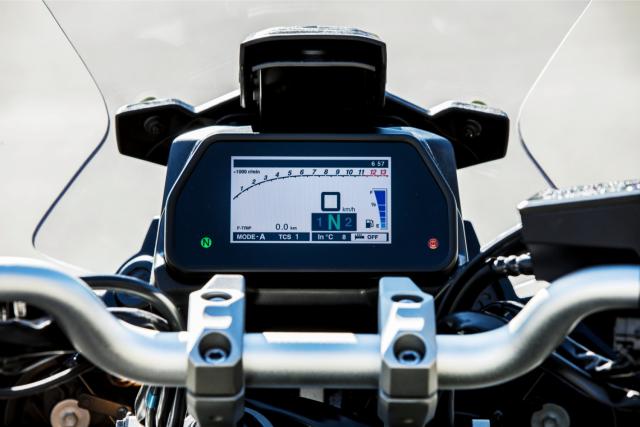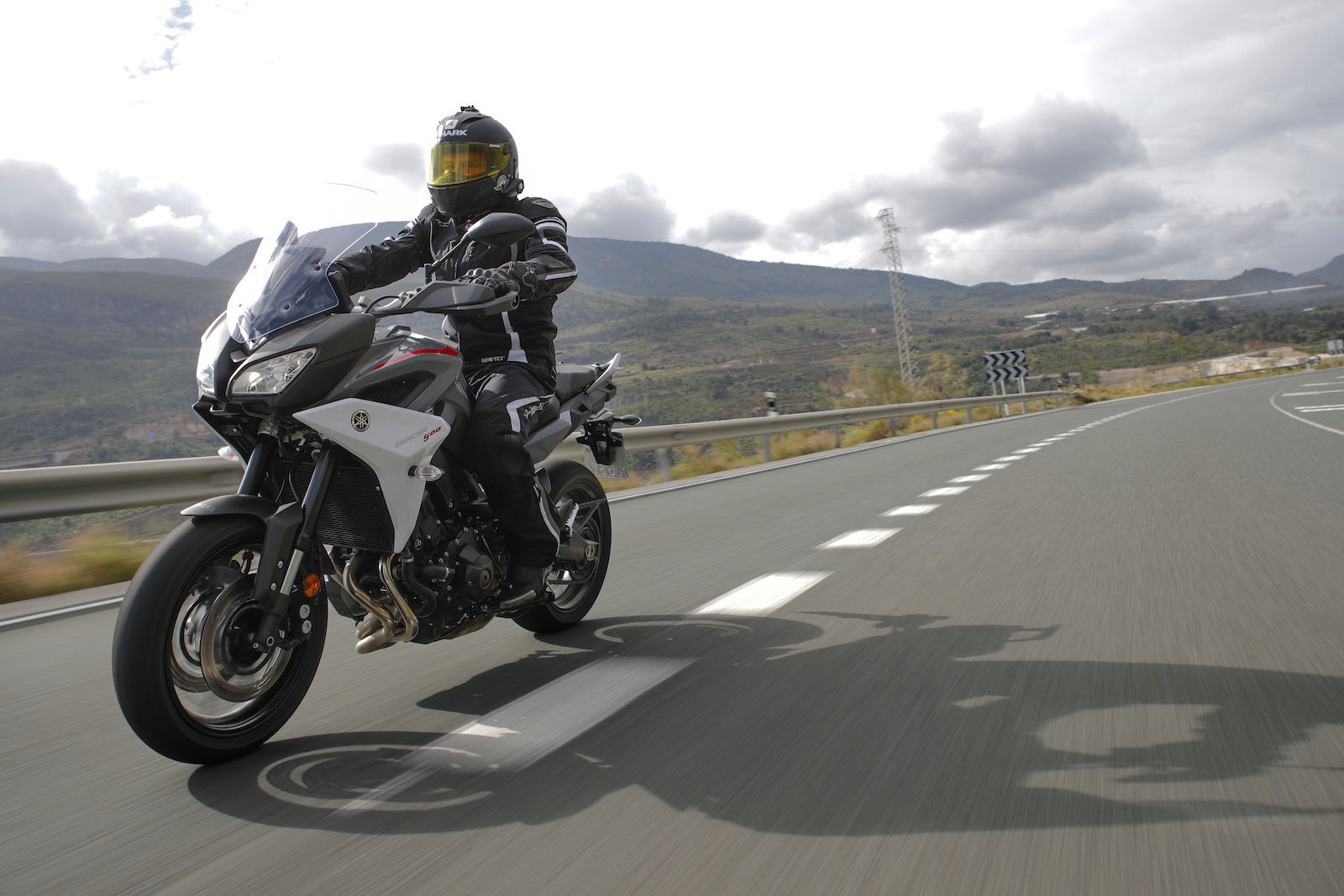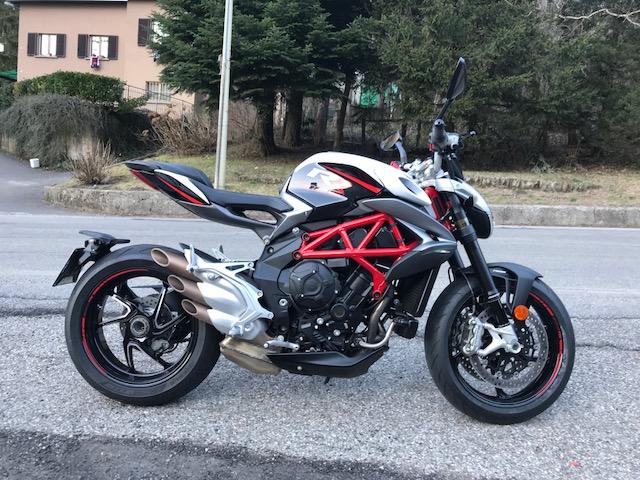Launch test: 2018 Yamaha Tracer 900 and 900GT
Full test of the new Tracer 900 and 900GT from Mark Forsyth at the launch in Spain - part one

Right, in these situations I find it’s often best to start at the beginning with some form of introduction. This is the new Yamaha Tracer 900 and Tracer GT. The former is an update of the now three year-old (but market leading) Tracer and the latter is a sort of trade-up position with lots of extra bolt-on goodies, on the basis that it’s much better for Yamaha to offer and benefit from the sale of these extras than the aftermarket industry.
First the ugly subject of cash: The new Tracer costs £9,249 and the GT model £10,649. As a point of interest, the hard panniers that come standard with the GT cost £800 so that £1,400 price difference isn’t too extreme when you bear in mind the other goodies festooned on the GT.
Most customers are unlikely to be interested in the cash price. Cash purchase is a rare beast favoured by lucky windfall or money-laundering types, with an ever-increasing number of people opting for a PCP or finance package. PCP is seen as a useful hook for existing Tracer owners who might be nearing the end of their existing PCP deal and fancy trading up to the fancier GT. There’s also a whole raft of other Yamaha bolt-on parts, like a full Akrapovic 'zorst system. These bolt-on extras can also be bolted into the PCP deal and the original parts kept by the owner. Or by a new owner found through a popular auction site.
So that’s the dirty subject of money firmly parked. What’s new about both these bikes?

TRACER 900
Starting with Tracer 900, it appears that customer research has been massively simplified by the t'interweb. Rather than holding focus groups or conducting expensive mail-outs all you have to do now is lurk around in owner’s forums and follow the right Twitter feeds to discover what existing owners do and don’t like about their rides. Rider and pillion comfort is top of the forum thread chat so that’s the first thing Yamaha has addressed with Tracer Mk2. A longer, wider sub-frame allows for a – yes, you guessed it – a longer, lower dual-density-foam, two height-position seat. This results in a 5mm higher seat height but the flatter profile (particularly the pillion seat) provides a much more buttock-cossetting experience.
Cossetted buttocks are happy buttocks. Everybody knows that.
Pillion footrests are treated to 30mm longer hangers, placing the footrests lower to create more space. For the rider, there’s a new, 100mm narrower handlebar (better for filtering) plus there's the chance to adjust the height of these according to taste with bolt-on riser options. I think this is the first time the word ‘riser’ has been used outside of Back Street Heroes magazine.
A 60mm longer swingarm fills the visual gap created by that longer seat subframe, and revised shock settings cater for this change in wheelbase geometry. New wider, bigger grab rails offer more pillion security and somewhere really handy to bungee things to when you’re sailing single-handed.
Up front there’s a revised fairing screen shape (and the option of buying a bigger one) with a nifty one-hand height adjustment. Mirror stalks obviously got forum members all frothy because the new ones have 30mm longer stalks for a better, less elbowy view behind.
Both models get a centre-stand and ABS as standard. Both models also get a pretty handy three-stage (high, low and no assistance at all) traction control system and a soft, aggressive and standard throttle response map. Traction can only be shut off completely when the bike's completely stationary. Throttle and traction can be altered on the move though, as long as the throttle is shut. Cruise, traction and throttle mapping is controlled on the left hand switchgear. A thumb wheel on the right hand bar scrolls through the dash info.

TRACER 900GT
Shuffling off in the direction of the GT, things start reading like a parts catalogue bragging list. Heated grips, adjustable preload, rebound and compression damping front ‘n’ back, cruise control, 22-litre, colour matched hard panniers, a quick-shifter and a colour TFT screen.
I’m not sure about a TFT screen for the ‘certain age’ group likely to be swayed by the appeals of a Tracer. I watched people of a ‘certain age’ popping their reading glasses on to decipher the tiny icons, used to scroll your way through rider modes, traction settings, heated grip level and cruise control commands. It’s pretty tricky popping your bins on when you’re white-knuckle filtering. At least speed and gear position info is in a huge, shit-eyesight-friendly font. I predict this topic being a subject of much gnashing on an obscure and rubbish forum somewhere, soon.

The GT is available in three paint hues, a sort of Audi-esque Nimbus grey, a Model T-Ford Midnight black and a really cool GT-only flat blue, called Phantom Blue. Gold anodized Kayaba forks mark out the GT model, as the standard Tracer gets a less-blingy black coating.
NEXT - RIDING, VERDICT, SPECS ->
2018 Yamaha Tracer 900/GT first ride - full test
RIDING
I managed to squeeze a (dry) morning in on the Tracer 900 and a (wet) afternoon on the GT model. In terms of distance it wasn’t quite a full 18l tankful but pretty close.
It’s my first acquaintance with Yamaha’s CP-3 motor and after wobbling through Granada’s rush hour traffic, it wasn’t hard to instantly feel the love. Creamy smooth, flexible, torquey with a great sound track it is – indeed - a thing of mechanical loveliness. The gear lever is slightly long on travel compared to what I’m used to (a rear-setted CBR600RR) but the gear selection is positive and precise and with a bit of practice and deft timing you don’t need the clutch on any upshift and some downshifts. There’s a slipper clutch, which is a bit baffling on a bike like this but it’s more bragging rights, I suppose.

With the throttle map in ‘standard’ mode it feels like the first quarter of twist-grip movement is slow-action. Blips on downshifts need to be really animated to make the engine respond as quickly as you want. Map A – direct response – improves matters massively. I’d only ever use Standard or Map B (soft) if I’d just had a heavy local anaesthetic in my right hand.
And wow, does it drive hard out of corners. It doesn’t really matter what gear you’re in. I tried pulling out of a hairpin bend in fourth gear and – safe in the knowledge that TC would step in if things got messy – I gave it full throttle at 20mph and just under 1,000rpm. The Tracer rewarded me with an unbelievably strong surge of acceleration with no glitches, no burps or farts. It was a big ask but it delivered bigly.
Such is the flexibility of this engine you soon learn to enter every corner a gear higher than you would normally. This technique makes flowing corners together a real joy.
Entering them takes a bit of getting used to due to the very softly damped and sprung Kayaba forks. There’s a whopping 137mm of front fork travel but 50mm of that is used up by the static sag which tells you quite a lot about the spring rate.
This soft spring rate makes itself known at the first sniff of front brake application, sending them into instant dive mode and creating a lot of front/aft pitch. Push it hard – harder than is sensible, to be fair – and it’ll try and sit up and run wide. A better technique is to use a lot of back brake, brake sooner and more gently and tackle corners on a trailing or opening throttle. Tracer prefers this method. I need one – a GT with more adjustability – for a week to play around with settings to see what can be achieved to try and dial this out. A day ain’t enough.
There’s 140mm of travel at the back. An 80kg rider and an 80kg passenger use up more than half this, bringing those lovely stainless downpipes to within 80mm of the ground. Probably not advisable to loft one off a humpback bridge, or try attacking a dip that’s likely to bottom everything out.

In the afternoon, for my time on the GT, it rained. This is normally seen as a bad thing but it actually showed the Tracer in its best possible light. When you’re stroking brakes rather than using them like someone else is paying for them – just like you would if your better half was on the back – the Tracer is pretty sublime in these conditions.
Using the least intrusive TC setting (1) to safely test grip levels, it’s such an easy bike to ride fast in the wet. The flexible engine delivers super-predictable drive characteristics and the throttle connection offered by map A is fantastically informative. Never have I enjoyed riding a road bike in the wet as much. Big claim, but true.

VERDICT
If I was the sort of person to award stars, Tracer would get a wholesome 4.5 out of 5. It’s not perfect but if you ride it in its zone it’s pretty close with lots of comfort, great weather and wind protection and, well, thatCP-3 motor.
My advice, just because it offers more adjustability and more value for money is to buy the GT. Make sure it’s in Phantom Blue and make sure it’s got an Akrapovic pipe to free up some sweet, sweet music.

2018 Yamaha Tracer 900 specifications
Engine: l/c, inline-triple, DOHC, 12v, 847cc
Bore x stroke: 78mm x 59.1mm
Compression ratio: 11.5:1
Maximum power: 115bhp@10,000 rpm
Maximum torque: 64.5 ft lbs@8,500 rpm
Fuel system: Y-CCT ride-by-wire fuel injection
Transmission: wet slipper clutch, six-speed gearbox, chain final drive
Frame: steel tube diamond
Front suspension: Kayaba USD forks
Rear suspension: Kayaba monoshock
Brakes: dual 298mm discs, four-piston calipers (front), single 245mm disc (rear)
Wheels/tyres: cast aluminium, 120/70 17 (front), 180/55 17 (rear)
Rake/Trail: 24 degrees/100mm
Seat height: 850mm
Wheelbase: 1,500mm
Wet weight: 214kg (full tank)
Fuel tank capacity: 18 litres (3.96 gal)

